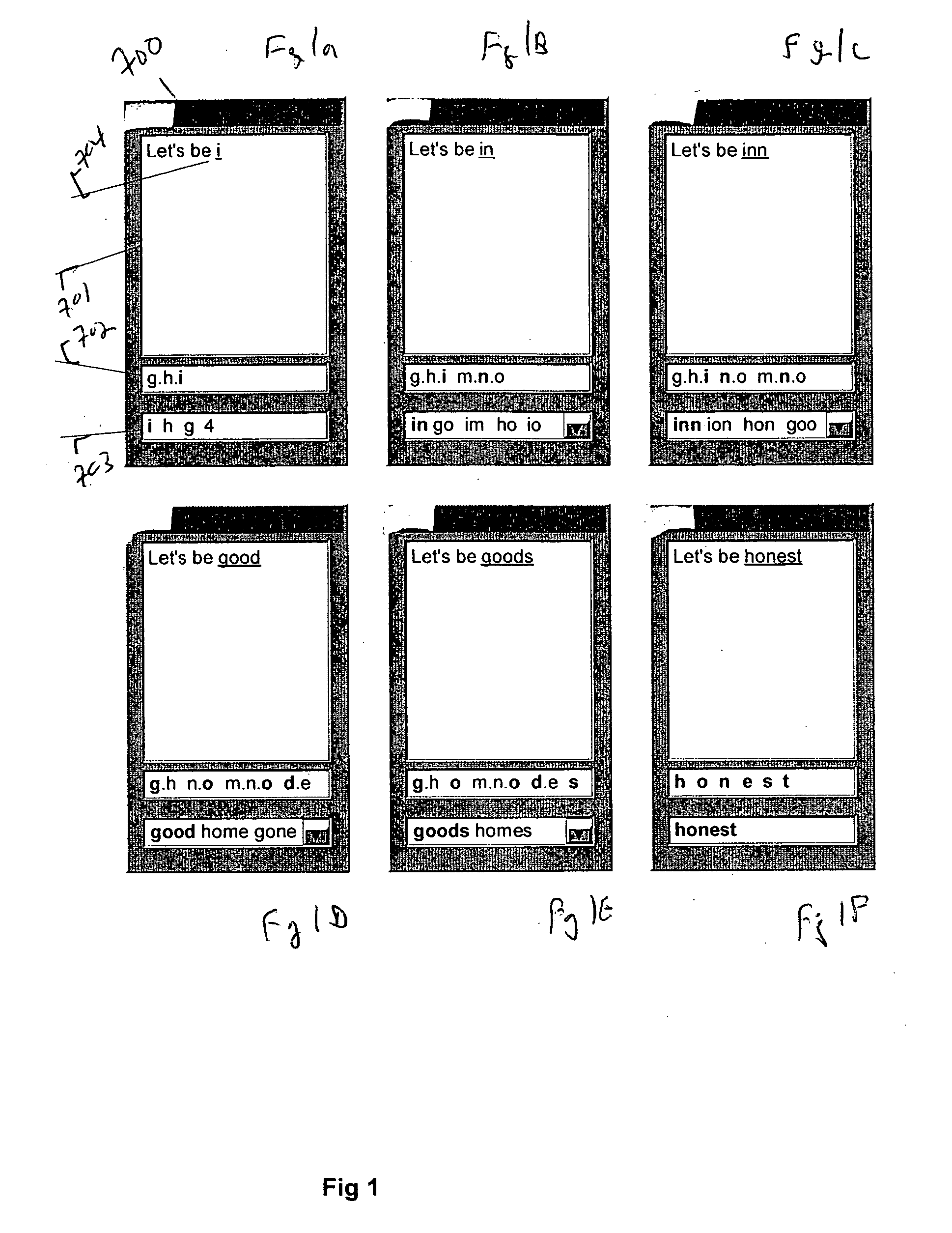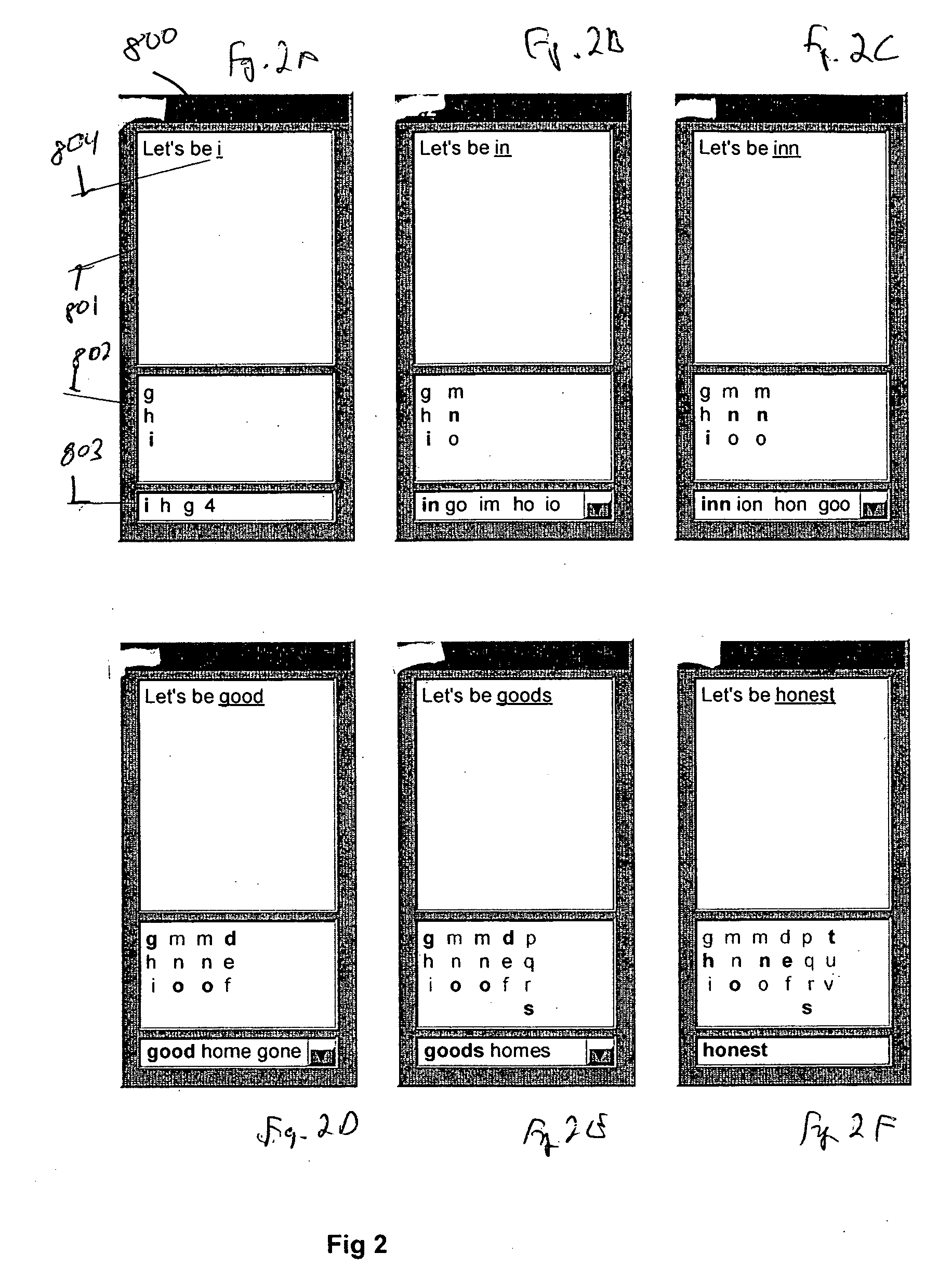Apparatus and method for providing visual indication of character ambiguity during text entry
a text entry and visual indication technology, applied in the field of text entry solutions, can solve the problems of limiting the size of the keyboard in the effort to produce a smaller portable computer, the miniature keyboard keys are too small to be easily or quickly manipulated by the user, and the portability of the computer has been getting smaller and smaller. to achieve the effect of reducing such ambiguity
- Summary
- Abstract
- Description
- Claims
- Application Information
AI Technical Summary
Benefits of technology
Problems solved by technology
Method used
Image
Examples
Embodiment Construction
[0025] It should be appreciated and understood by one of ordinary skill in the art that the discussion herein applies to characters and sequences of characters, which, when combined make a linguistic object or part of an object. A typical example is a character in any language, such as a letter, digit, punctuation mark, or any other symbol from a language. A typical example of an object or part of an object is a word or part of a word. However, the discussion herein equally applies to elements of other alphabetic, ideographic, and phonetic systems such as Chinese zhuyin, Japanese kana, and Korean jamos. Also, it should be noted that the objects do not have to be linguistic, because the disambiguating system claimed herein can be used to look up icons, phone numbers, or inventory records, as long as a type of symbolic string representation is present. Therefore, it should be appreciated that use of terms, such as letter, word, word stem, and the like is not limited only to those appl...
PUM
 Login to View More
Login to View More Abstract
Description
Claims
Application Information
 Login to View More
Login to View More - R&D
- Intellectual Property
- Life Sciences
- Materials
- Tech Scout
- Unparalleled Data Quality
- Higher Quality Content
- 60% Fewer Hallucinations
Browse by: Latest US Patents, China's latest patents, Technical Efficacy Thesaurus, Application Domain, Technology Topic, Popular Technical Reports.
© 2025 PatSnap. All rights reserved.Legal|Privacy policy|Modern Slavery Act Transparency Statement|Sitemap|About US| Contact US: help@patsnap.com



